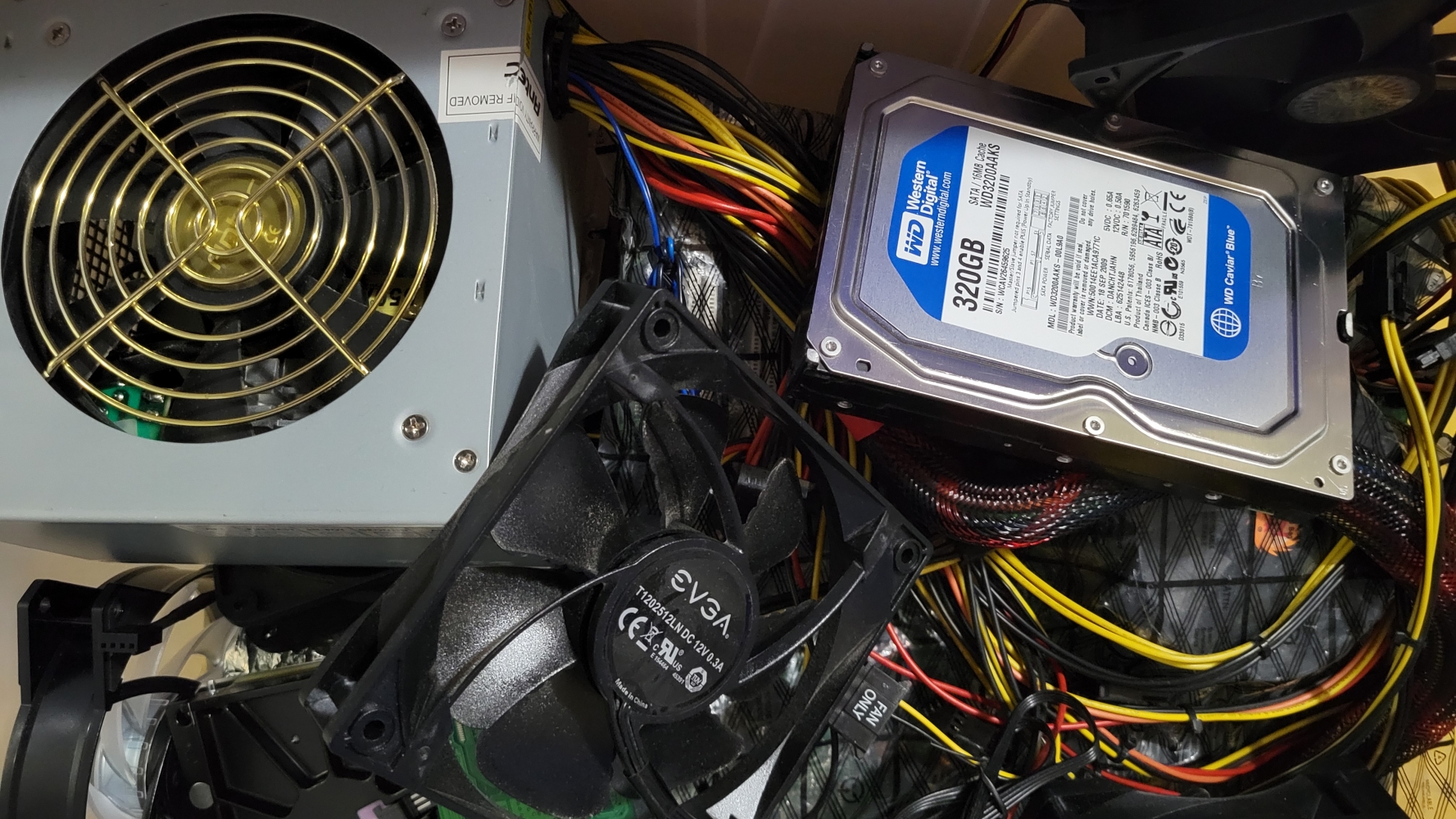
Why I Save Old Computer Parts
Last Updated on October 8, 2025 by David Both
As a long-time system administrator I have become known to friends and others as someone who can repair or repurpose their old computers. Or they just gift them to me if they’ve already purchased a new computer and I fix it if necessary, install Linux and use it myself or gift it to someone who needs one.
I’ve also built my share of computers over the years. Some of my older computers have experienced various types of hardware problems as they age. I have also needed to upgrade components from time to time such as motherboards, display adapters, and more. I save the old components so long as they are working and keep them on-hand just in case I might need them someday. It’s a trait that most old SysAdmins share and it requires many drawers and stackable containers to store all those components.
Sometimes on-board components fail. For example I have had on-board Network Interface Cards (NICs) and display adapters fail. I once had an on-board parallel ATA disk drive adapter fail. In those cases I disable the defective component in BIOS/UEFI and install a new adapter in one of the PCI or PCIe slots. Eventually motherboards fail completely but I find that to be an infrequent occurrence.
I always keep good working components from all of those systems regardless of how they become available. Most of the time, when a component fails, a replacement can be used – if one is available. It can be difficult to find replacements of almost any kind for hardware that’s ten or fifteen years old. Unless you’ve stripped the working ones out of other old computers like I do. That includes everything from the motherboard itself to memory, storage devices whether SSD or HDD, power supplies, fans, cables, and many types of adapter cards.
The problem
I needed an older computer for my yoga room so I can stream classes by Cyndi who is not only my yoga instructor but also co-author of our book, “Linux for Small Business Owners.” I also wanted to stream music for meditation and yoga when practicing alone. I chose one of my older computers that I built with an Intel Corporation Motherboard Model DH61BE and a BIOS date of 2012 which makes it about 10 years old. Unfortunately the motherboard video doesn’t include an HDMI connector.
And the Solution
I searched my drawer of video adapters and found an old EVGA GeForce 8400 GS which was new in 2007, 15 years ago. It even had the requisite HDMI connector as well as the PCI bus connector. I installed it in the system, connected it to my 10-year-old no-name display with 1680×1050 maximum resolution and built-in audio. A bit of testing verified that both audio and video worked as they should.
So an old motherboard and an even older PCI video adapter allowed me to use an old display to meet my needs. So my collection of old parts allowed me to resolve a current problem. And, of course, Linux which supports all of that old hardware without the need to resort to extended Internet searches for device drivers.
Final Thoughts
I live near a recycling “Convenience Center” and make trips there to recycle many types of materials that they accept. Sometimes that includes old, truly broken computer parts. When I’m there I look at all the perfectly good computers that the owners decided were too slow – thanks to the collection of malware collected by WIndows – or that had a single component that failed.
I see so much that could be re-used but the policy is that “dumpster diving” is not allowed. So I just sigh and console myself with the fact that these computers are shipped to a certified recycling center also here in Raleigh that will repair broken computers by using good parts from others. The refurbished computers are then sent to a non-profit in Durham which is close and they install Linux or a crippled version of Windows and provide them at very low cost to people who would otherwise have no access to computers.